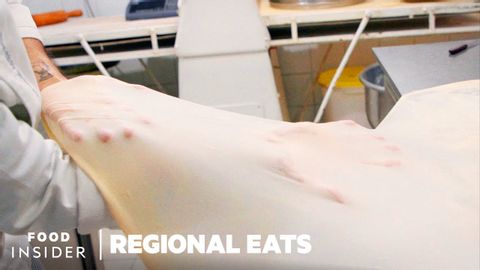希臘傳統的Bougatsa Phyllo糕點是如何製作的 | 地區美食 (How Traditional Greek Bougatsa Phyllo Pastry Is Made | Regional Eats)
 沒有此條件下的單字
沒有此條件下的單字- adj.笨拙的;不靈活的;尷尬的,令人難堪的;難處理的;難用的
US /ɔˈθɛntɪk/
・
UK /ɔ:ˈθentɪk/
US /ɪnˈkrɛdəblɪ/
・
UK /ɪnˈkredəbli/
- adv.令人難以置信的是;難以置信地;非常地;令人難以置信地
- v.t./i.伸展(肢體等);拉長
- n.伸展;一段路程、區域;物品連續排列;一段時間;階段
